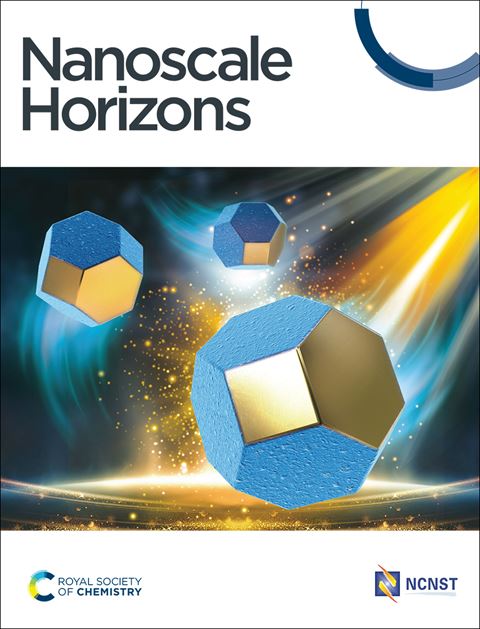“波长可调紫外等离子体的尺寸可调铑纳米结构”的思考
IF 6.6
2区 材料科学
Q1 CHEMISTRY, PHYSICAL
引用次数: 0
摘要
等离子体光催化提出了一种控制热和光的新方法,使反应在较温和的条件下发生。2016年,Zhang及其同事报告了一种合成具有所需尺寸和表面等离子体共振频率的铑纳米立方体的新方法,其中共振频率随着尺寸的增加而从深紫外红移到400 nm (X. Zhang, P. Li, Á)。刘建军,刘建军,刘建军,纳米尺度光学。, 2016, 1,75 - 80, https://doi.org/10.1039/C5NH00062A)。在这个反思中,我们讨论了这项工作的影响,并总结了受这一初步发现启发的研究。本文章由计算机程序翻译,如有差异,请以英文原文为准。

A reflection on ‘Size-tunable rhodium nanostructures for wavelength-tunable ultraviolet plasmonics’
Plasmonic photocatalysis presents a novel approach for controlling heat and light, enabling reactions to take place under milder conditions. In 2016, Zhang and co-workers reported a novel approach in synthesizing rhodium nanocubes with desired sizes and surface plasmon resonances frequency, where the resonance frequency underwent a red-shift from deep UV to 400 nm as the size increased (X. Zhang, P. Li, Á. Barreda, Y. Gutiérrez, F. González, F. Moreno, H. O. Everitt and J. Liu, Nanoscale Horiz., 2016, 1, 75–80, https://doi.org/10.1039/C5NH00062A). In this reflection, we discuss the impact of this work and summarize the research inspired by this initial discovery.
求助全文
通过发布文献求助,成功后即可免费获取论文全文。
去求助
来源期刊

Nanoscale Horizons
Materials Science-General Materials Science
CiteScore
16.30
自引率
1.00%
发文量
141
期刊介绍:
Nanoscale Horizons stands out as a premier journal for publishing exceptionally high-quality and innovative nanoscience and nanotechnology. The emphasis lies on original research that introduces a new concept or a novel perspective (a conceptual advance), prioritizing this over reporting technological improvements. Nevertheless, outstanding articles showcasing truly groundbreaking developments, including record-breaking performance, may also find a place in the journal. Published work must be of substantial general interest to our broad and diverse readership across the nanoscience and nanotechnology community.
 求助内容:
求助内容: 应助结果提醒方式:
应助结果提醒方式:


